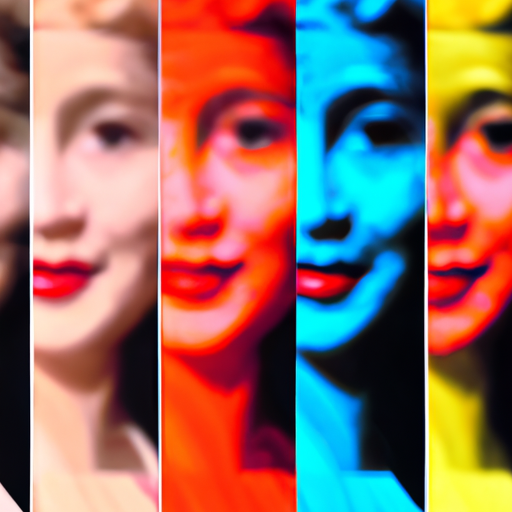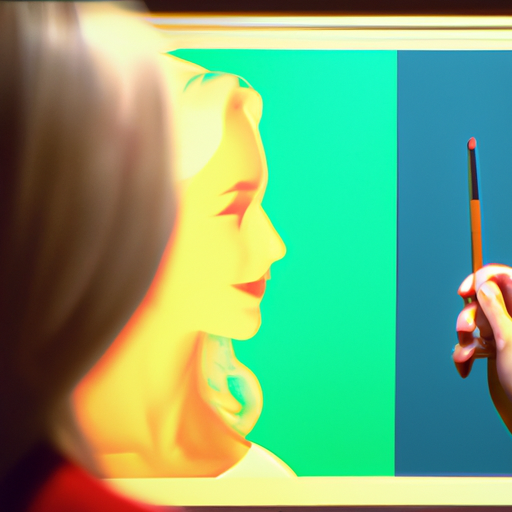
-
Table of Contents
Harmony in Colors: Lessons from Fine Art for Design

Colors play a crucial role in design, evoking emotions, setting moods, and creating visual impact. The world of fine art offers valuable lessons on how to achieve harmony in colors, enabling designers to create visually appealing and impactful designs. By understanding the principles and techniques used by artists, designers can elevate their work to new levels. In this article, we will explore the lessons that can be learned from fine art and how they can be applied to design.
The Color Wheel: A Foundation for Harmony
One of the fundamental tools used by artists and designers alike is the color wheel. The color wheel is a visual representation of the relationships between colors, helping to create harmonious color schemes. It consists of primary, secondary, and tertiary colors arranged in a circular format.
Primary colors, such as red, blue, and yellow, are the building blocks of all other colors. Secondary colors, such as orange, green, and purple, are created by mixing two primary colors. Tertiary colors, such as red-orange, yellow-green, and blue-violet, are created by mixing a primary color with a secondary color.
By understanding the relationships between colors on the color wheel, designers can create harmonious color schemes that are visually pleasing. For example, complementary colors, which are opposite each other on the color wheel, create a high contrast and can be used to draw attention. Analogous colors, which are adjacent to each other on the color wheel, create a sense of harmony and can be used to create a cohesive design.
The Power of Contrast
Contrast is a powerful tool in both fine art and design. It helps to create visual interest, guide the viewer’s eye, and highlight important elements. In fine art, contrast is often achieved through the use of complementary colors, value differences, or texture variations.
In design, contrast can be achieved through various means, such as color, size, shape, and texture. For example, using a bold, vibrant color against a neutral background creates a strong contrast that immediately grabs attention. Similarly, using a large element next to a small one creates a contrast in size, adding visual interest to the design.
Contrast can also be used to create hierarchy and guide the viewer’s eye. By using contrasting colors or sizes for important elements, designers can ensure that they stand out and attract attention. This can be particularly useful in web design, where designers want to direct users’ attention to specific buttons or calls to action.
The Role of Light and Shadow
Light and shadow are essential elements in both fine art and design. They add depth, dimension, and realism to an artwork or design. Understanding how light and shadow interact with colors can help designers create more realistic and visually appealing designs.
In fine art, artists use techniques such as chiaroscuro to create a sense of depth and volume. Chiaroscuro is the use of strong contrasts between light and dark areas to create a three-dimensional effect. By understanding how light and shadow interact, designers can create more realistic and dynamic designs.
In design, the use of light and shadow can help create a sense of depth and hierarchy. By adding subtle shadows or highlights to elements, designers can make them appear more three-dimensional and interactive. This technique is often used in user interface design to create a more intuitive and engaging user experience.
Case Study: The Color Harmony of Monet’s Water Lilies
Claude Monet’s Water Lilies series is a perfect example of how color harmony can be achieved in fine art. Monet used a limited color palette of blues, greens, and purples to create a serene and harmonious atmosphere. The colors blend seamlessly together, creating a sense of unity and tranquility.
Designers can learn from Monet’s color harmony by applying a similar approach to their designs. By selecting a limited color palette and using colors that are closely related on the color wheel, designers can create a cohesive and visually pleasing design. This technique is particularly useful in branding and logo design, where consistency and harmony are key.
Conclusion
Colors are a powerful tool in design, and the world of fine art offers valuable lessons on how to achieve harmony in colors. By understanding the principles and techniques used by artists, designers can create visually appealing and impactful designs. The color wheel provides a foundation for creating harmonious color schemes, while contrast helps to create visual interest and guide the viewer’s eye. Light and shadow add depth and realism to designs, while case studies like Monet’s Water Lilies demonstrate the power of color harmony. By incorporating these lessons from fine art into their work, designers can elevate their designs and create memorable experiences for their audience.
